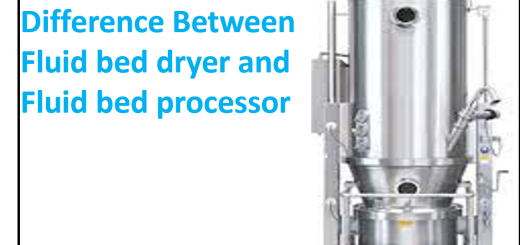Soft Gelatin Capsule – A Encapsulation Technology in Pharmaceuticals
This article provide information about soft gelatin capsules i.e. Its composition, Manufacturing process, advantages, Challenges, Factor affecting on same, applications and related frequently asked questions.
What is mean by Soft Gelatin Capsules (SGC)?
Soft Gelatin Capsules (SGCs) are a type of encapsulation Techniques that prefers gelatin as a primary material to enclose and deliver medicated liquid such as drug or supplement. SGCs are flexible, easy to swallow, and can be customized to meet the specific needs of customers/patient.
SGCs are also known as softgel, soft capsule, or liquid-filled capsule, and are available in a variety of shapes, sizes, and colors, depending on the specific medication and its intended use.
What is the Composition in Soft Gelatin Capsules (SGC)
Soft Gelatin Capsules consist of two main components: a shell and a filled liquid material. The shell is made up of gelatin, plasticizers, and water. The fill is a liquid or semi-solid mixture of active and inactive ingredients, such as drugs, vitamins, or supplements, along with solvents, surfactants, and diluents etc.
The composition of the shell and the filled liquid material can be redesign to achieve the required release conditions, stability, bioavailability, and other required properties as per customer and patients need.
Manufacturing Process of Soft Gelatin Capsules (SGC)
The manufacturing process of SGCs involves several different stages, including shell preparation, filling, sealing and inspection.
The gelatin shell is first prepared by mixing gelatin, plasticizers, and water in a mixing tank, followed by heating and sterilization. The liquid or semi-solid fill is then prepared separately and added to the shells using a filling machine. The filled capsules are then sealed using a sealing machine, and inspected for defects and quality control.
Manufacturing Process in Details :
Soft Gelatin Capsules are manufactured using a process that involves preparing the gelatin shell, filling it with the medication, sealing of the filled capsule and further inspection The manufacturing process can be broken down into the following steps:
Step 1: Gelatin Preparation
The first step in Manufacturing process is to prepare the gelatin solution that will be used to form the capsule shell. The gelatin is typically derived from collagen and is dissolved in a solvent such as glycerin or sorbitol. The gelatin solution is then heated and mixed with other ingredients such as plasticizers, colorants, and opacifiers to create a homogeneous mixture.
Step 2: Filling
The next step is to fill the gelatin shells with the medicated prepared solution/suspension (Active Ingredient + Excipients). The fill is typically a liquid or semi-solid formulation that is prepared separately and then injected into the gelatin shell. The fill may also contain excipients such as surfactants, emulsifiers, and preservatives to improve the stability and bioavailability of the medication.
Step 3: Sealing
Once the capsules are filled, they are sealed to prevent leakage or contamination. The sealing process may involve applying heat, pressure, or a combination of both to melt the gelatin edges and close them together and allow them to cool.
Step 4 : Inspection
After cooling the capsules are inspected for defects such as cracks, leaks, discoloration and any other defects generated during filling and sealing stages.
Advantages of Soft Gelatin Capsules (SGC)
SGCs offer several advantages over other forms of oral medication delivery, such as Tablets, Powders, and Liquids.
- Customizable Release Profiles: SGCs can be designed to deliver the medication at a specific rate, location, or time, depending on the formulation and the desired therapeutic effect.
- Easy to Swallow: SGCs are easier to swallow than Tablets or Hard gelatin Capsules, especially for children, elderly patients, or those with swallowing difficulties.
- Improved Bioavailability: SGCs can enhance the bioavailability and absorption of certain drugs and supplements due to their liquid or semi-solid fill and the ability to bypass the first-pass metabolism.
- Protect the Active Ingredient: SGCs can protect the active ingredient from degradation, oxidation, or light, which can affect the potency and stability of the medication.
- Mask unpleasant taste or odor: SGCs can mask the unpleasant taste or odor of certain drugs or supplements, making them more pleasant testing and convenient for patients.
Challenges in Manufacturing Soft Gelatin Capsules (SGC)
Inspite of SGCs having many benefits and advantages, there are several challenges too, some of the enlisted as below :
- Material compatibility: The fill and shell materials must be compatible with each other and the active ingredient to ensure stability and efficacy.
- Quality control: The manufacturing process of SGCs requires strict quality control to ensure the uniformity, potency, and safety of the medication.
- Stability: SGCs can be sensitive to environmental factors such as Temperature, Humidity, and Light, which can affect their stability and shelf-life.
- Cost: SGCs can be more expensive to manufacture than other forms of medication delivery, due to the complex and specialized equipment and materials required.
- PH of the medicated Liquid : If the pH of medicated solution/Suspension is too acidic or too alkaline, it can cause the gelatin shell to become unstable and degrade, leading to leakage or contamination of the fill. The pH should be carefully controlled during the manufacturing process to ensure the stability and potency of the medication.
Factors Affecting the Stability of Soft Gelatin Capsules (SGC)
The stability of SGCs can be affected by several factors, including:
- Temperature and humidity: SGCs should be stored in a cool, dry place to prevent degradation and stability issues.
- Light exposure: SGCs are sensitive to light exposure, which can cause oxidation and degradation of the active ingredient and the gelatin shell.
- pH: The pH of the fill and shell can affect the stability and compatibility of the medication.
- Excipients: The selection and quantity of excipients in the fill can affect the stability and solubility of the medication.
Applications of Soft Gelatin Capsules (SGC)
SGCs are used in a wide range of applications, including:
- Pharmaceuticals: SGCs are commonly used to deliver drugs such as pain relievers, vitamins, and supplements.
- Nutraceuticals: SGCs are also used to deliver dietary supplements, such as omega-3 fatty acids, probiotics, and herbal extracts.
- Veterinary medicine: SGCs are used to deliver medication to animals, such as antibiotics and vitamins.
Difference between Soft Gelatin Capsules vs. Hard Gelatin Capsules (SGC)
Soft Gelatin capsules are another type of encapsulation technology that uses gelatin as the primary material and liquid or semisolids are the filled medicated material. However, hard gelatin capsules are solid, contains solid medicated material such as Powder/Granules/pellets/Tablet as medicated material filled in preformulated hard gelatin shells and do not have a liquid or semi-solid fill.
Storage and Handling of Soft Gelatin Capsules (SGC)
SGCs should be stored and handled properly to ensure their stability and potency. Some general storage and handling guidelines include:
- Store in a cool, dry place, away from direct sunlight and heat.
- Do not expose to high humidity or extreme temperatures.
- Handle with care to avoid crushing or breaking the capsules.
Quality Control of Soft Gelatin Capsules (SGC)
Quality control is an essential aspect of SGC manufacturing to ensure the uniformity, potency, and safety of the medication. Some of the quality control measures used in SGC manufacturing include:
- In-process quality control: This involves monitoring the manufacturing process at various stages, such as shell preparation, filling, sealing and inspection to ensure the quality and consistency of the capsules.
- Finished product Testing: This involves testing the final product for uniformity, potency, stability, and other quality parameters to ensure that it meets the required specifications and standards.
- Environmental monitoring: This involves monitoring the manufacturing environment for cleanliness, Temperature, Humidity, and other related factors that can affect the quality and stability of the capsules.
Components of Soft Gelatin Capsule Making Machine :
Soft Gelatin Capsule making machines are complex equipment designed to efficiently and accurately to produce soft gelatin capsules. They consist of many components that work together to create the capsule shells, fill them with medicated liquid, and seal them to create a finished product. Some of the basic major components of a soft gelatin capsule making machine includes as :
- Gelatin Melting Tank: This component is responsible for melting the gelatin, which is then transferred to the gelatin preparation tank.
- Gelatin Preparation Tank: The gelatin preparation tank is where the gelatin is mixed with water, plasticizers, and other ingredients to form the gelatin solution.
- Metering pump: The metering pump is used to accurately dispense the gelatin solution into the encapsulation machine.
- Encapsulation machine: This is the main component of the soft gelatin capsule making machine, responsible for encapsulating the medicated liquid. The machine consists of several sub-components, including:
- Spreader box: The spreader box spreads the gelatin solution evenly across the encapsulation plate.
- Encapsulation plate: The encapsulation plate is where the gelatin shells are formed. It consists of two halves that rotate together to create the capsule shells.
- Filling station: The filling station is where the medicated liquid is dispensed into the gelatin shells.
- Drying station: The drying station dries the capsules to remove any excess moisture.
- Trimming station: The trimming station removes any excess gelatin from the capsules.
- Inspection station: The inspection station checks the capsules for any defects or imperfections.
- Cooling drum: The cooling drum is used to cool the soft gelatin capsules after they have been formed and dried.
- Polisher: The polisher is used to polish and clean the soft gelatin capsules before they are packaged and distributed.
- Control system: The control system is responsible for monitoring and controlling the various components of the soft gelatin capsule making machine, ensuring that the capsules are produced efficiently , accurately and compliant way.
Frequently Asked questions (FAQs)
How Soft Gelatin Capsules manufactured?
Soft Gelatin Capsules are manufactured using a process that involves preparing the gelatin shell, filling it with the medicated liquid, and sealing it.
What are the advantages of Soft Gelatin Capsules over other forms of medication delivery?
Soft Gelatin Capsules offer several advantages, including improved bioavailability, customizable release profiles, and the ability to mask unpleasant tastes or odors.
What factors affect the stability of Soft Gelatin Capsules?
The stability of Soft Gelatin Capsules can be affected by factors such as temperature, humidity, light exposure, pH, and the selection and quantity of excipients in the fill.
What are some common applications of Soft Gelatin Capsules?
Soft Gelatin Capsules are commonly used in pharmaceuticals, nutraceuticals, cosmetics, and veterinary medicine to deliver drugs, supplements, and cosmetic ingredients.
How should Soft Gelatin Capsules be stored and handled?
Soft Gelatin Capsules should be stored in a cool, dry place, away from direct sunlight and heat, and handled with care to avoid crushing or breaking the capsules.
Can Soft Gelatin Capsules be used for all types of medication?
No,Soft Gelatin Capsules may not be suitable for all types of medication. The formulation and stability of the medication should be carefully considered before using Soft Gelatin Capsules as a dosage form.
Can Soft Gelatin Capsules be used for veterinary medicine?
Yes, Soft Gelatin Capsules can be used for veterinary medicine and human medicine as well. The same considerations for storage and stability apply.



